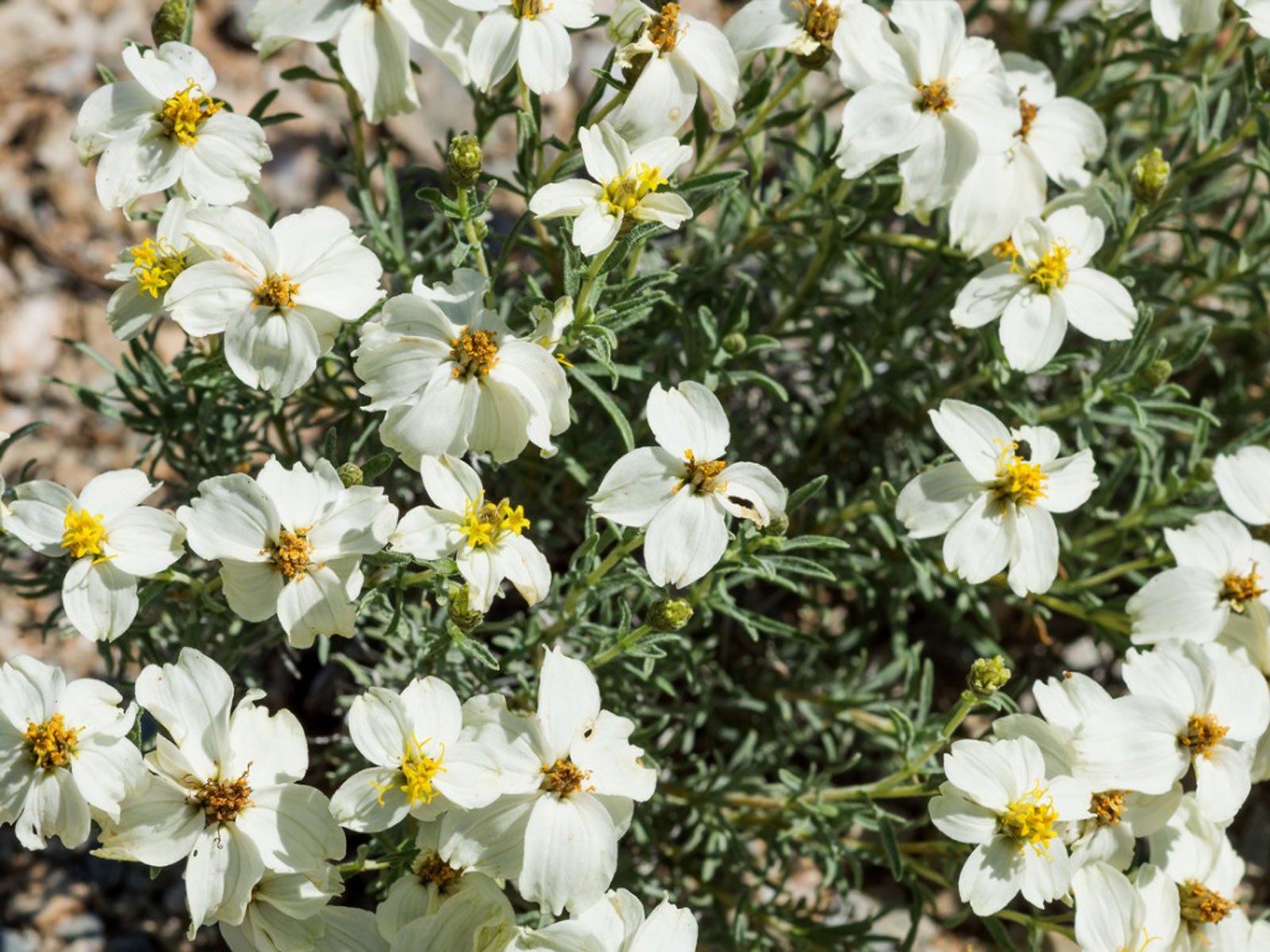Full Sun In The Desert: Best Desert Plants For Full Sun


Gardening in desert sun is tricky and yucca, cacti, and other succulents are often the go-to choices for desert dwellers. However, it’s possible to grow a variety of tough but beautiful plants in these hot, arid regions.
Best Full Sun Desert Plants
Below you will find desert plants for full sun. All are water-wise and easy to grow, even in punishing conditions. Most are environmentally friendly, native plants that are capable of withstanding full sun in the desert.
- Yellow Pine-leaf Beard Tongue: This penstemon plant produces bright yellow, tube-shaped flowers in late spring and early summer. Also known as yellow pine-leaf penstemon, this plant, native to the desert Southwest, is named for its evergreen foliage which resembles pine needles.
- Silver Ironweed: Also known as Vernonia, this is a super tough, sun-loving plant perfect for gardening in desert sun. Look for silvery foliage and bright pink flowers that attract both bees and butterflies but tend to discourage deer and rabbits.
- Yellow Columbine: Also known as golden columbine, it is native to the southwestern United States and northwestern Mexico. Look for bushy mounds of attractive foliage and sweet yellow blooms on this columbine plant.
- Baja Fairy Duster: This is a shrubby plant that thrives in heat and bright sunlight but benefits from occasional deep watering in summer. Native to Mexico and Baja California, fairy duster is appreciated for the clusters of bright red flowers that resemble tiny feather dusters.
- Desert Sunrise Agastache: A favorite of hummingbirds and butterflies, thanks to the tall spikes of nectar-rich, tube-shaped flowers of pink and orange that show in late summer. The mint-scented foliage of this drought-tolerant, North American agastache native is an added bonus.
- California poppy: Native to Mexico and the southwestern United States, it tolerates full sun in the desert. This familiar plant displays stunning blooms of yellow, orange, apricot, pink, or cream. The soft, finely cut foliage is pretty too. Although it is technically perennial, California poppy is often grown as a self-seeding annual.
- Desert Zinnia: A low-maintenance native plant with bright yellow-gold flowers in late summer, this bee and butterfly friendly zinnia usually isn’t a top choice of rabbits and deer. When it comes to desert plants for full sun, desert zinnia is one of the best.
- Purple Leaf Sandcherry: Purple leaf sandcherry is a tough, low growing groundcover with sweet smelling, pinkish white flowers in early spring. This perennial is deciduous with foliage that turns a showy shade of reddish mahogany in autumn.
- Desert Sunflower: Native to the desert climates of Mexico and the southwestern United States, this shrubby plant produces masses of bright yellow, daisy-like flowers from late winter through spring, sometimes blooming again in autumn. Desert sunflower is a good choice for a spot with dappled afternoon sunlight.
- Arizona Red Shades Gaillardia: A wonderful plants that produces deep orange-red flowers from early summer to autumn even in hot, dry conditions, as long as you keep it deadheaded. Also known as blanket flower, it is a North American native and one of the best full sun desert plants.
Gardening tips, videos, info and more delivered right to your inbox!
Sign up for the Gardening Know How newsletter today and receive a free copy of our e-book "How to Grow Delicious Tomatoes".

A Credentialed Garden Writer, Mary H. Dyer was with Gardening Know How in the very beginning, publishing articles as early as 2007.
-
 Looking For Plants To Give You The Soft And Fuzzies? Try These 5 Fuzzy Leaf Plant Options
Looking For Plants To Give You The Soft And Fuzzies? Try These 5 Fuzzy Leaf Plant OptionsLovers of texture, drama, silver foliage and tactile plants will adore these special sensory garden additions. These fuzzy leaf plant options will leave you all aglow
By Susan Albert
-
 Get Ready For A Summer Of Hummers! Grow These Full Sun Hummingbird Plants and Flowers
Get Ready For A Summer Of Hummers! Grow These Full Sun Hummingbird Plants and FlowersIf you’re lucky enough to enjoy a sunny backyard, make sure you are maxing out on your pollinator opportunities and grow these full sun hummingbird plants and flowers
By Tonya Barnett